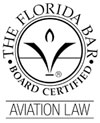Thanks to the Transportation Security Administration (TSA) doing its job, many a traveler has boarded an airline flight with less personal possessions than when they arrived at the airport. Everyone who travels by air knows there are some things that cannot be brought onboard an airline flight, and if found to be in your possession they will be seized by the TSA at the security checkpoint. Even worse, some air travelers have suffered the embarrassment of being singled out by the TSA for additional screening at the TSA checkpoint, or in rare instances have been identified to a law enforcement officer for possible intervention. What have these people done to deserve such treatment? An understanding of what the TSA is looking for as you pass through the airport screening checkpoint may help make your next trip less stressful.
The TSA is constantly updating its list of what can and cannot be carried onto the airplane or contained inside checked baggage. Some items that you cannot bring into the airplane’s cabin in your pockets or in your carry-on bags are permitted to be inside checked baggage. But be careful. There are items that cannot be carried into the cabin and are also not allowed to be in checked baggage. An easy way to be sure that you are not carrying any prohibited items on your person or in your checked baggage is to review the updated list of prohibited items and permitted items on the TSA website before you go to the airport, www.tsa.gov/traveler-information/prohibited-items . Another way to verify what is permissible to bring onto the airplane is to download on your mobile device the iOS or Android version of the My TSA App, found on iTunes and Google Play. You can also access the mobile web version on your mobile device by going to www.tsa.gov/mobile.
Screening what you carry onboard the airplane is not the only thing being done by the TSA at the airport. Since 2008, the TSA has been using specially trained Behavior Detection Officers (BDO’s) in a program known as Screening of Passengers by Observation Techniques (SPOT). SPOT is a behavior observation and analysis program designed to identify passengers who pose or may pose potential security risks by focusing on behaviors indicative of high levels of fear, stress, or deception. Passengers whose behavior exceeds a threshold of behavioral indicators may be singled out for additional screening, or for law enforcement officer intervention. In these instances, the BDO may check the individual’s identity against intelligence, terrorist, and law enforcement databases. Uniformed BDO’s typically work in two-person teams at airport checkpoint lines, looking for suspect behaviors. The officers sometimes initiate casual conversations with passengers, particularly if a passenger is exhibiting behaviors on the SPOT checklist. In most instances, the conversation will resolve the suspicion. If this happens to you, be yourself. Do not joke about security, and do not complain.
According to the TSA, none of the behaviors considered as suspect refer to, or suggest, race, religion or ethnicity. Additionally, no single indicator, by itself, is used to identify a passenger as high risk. A passenger must exhibit several indicators before the BDO intervenes. If you do not like the way the TSA screeners are doing their job, do not complain while standing in line. Arrogant complaining about airport security, combined with other behavioral indicators, may flag you as a high risk passenger and subject you to enhanced screening. According to the TSA, statistics indicate that for every person correctly identified as a high risk passenger by BDO’s, 86 were misidentified. This is significantly better than the former program of random screening, where for every person correctly identified as a threat, 794 were misidentified.

 August 23, 2013 in
August 23, 2013 in 


